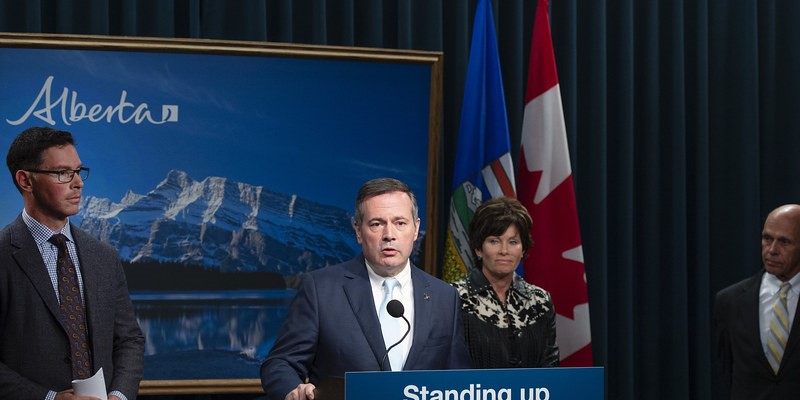Alberta’s budget at a glance

Today’s Alberta budget represents a marked departure from recent fiscal policy in the province. Alberta governments of various stripes have run nearly uninterrupted deficits since 2008/09, and the province has gone from having $35 billion in net financial assets to over $37 billion in net debt—a roughly $70 billion deterioration in the province’s financial assets over the course of a decade.
After years of complacency, however, Thursday’s budget finally produced a serious plan to begin addressing Alberta’s fiscal challenges by actually reducing provincial government spending instead of simply hoping for oil revenues to bounce back and save the day.
The plan is not as ambitious as it could be. A faster path to deficit elimination (two to three years instead of four) would have reflected a recognition of Canadian history that faster plans have a much better track record of success. It also would have meant less new debt. What’s more, additional spending reductions would have created additional fiscal room for additional pro-growth tax reform beyond the steps that have already been made with respect to Corporate Income Taxes.
Nonetheless, if it’s fully implemented, the budget will have marked a major shift in Alberta provincial fiscal policy. Below are a few key takeaways from the budget, with a particular focus on comparing the new budget to the fiscal policy approach that has prevailed in recent years.
- Deficit reduction: the budget plan would eliminate the deficit over a four-year period. This is significant change from the recent past, during which there has been little consistent progress on the deficit, which has ranged from $6.4 billion to $10.8 billion.
- Spending: This is likely the most important change in approach. The last government increased annual program spending at an average annual rate of 3.4 per cent between 2015/16 and 2018/19. By contrast, program spending will now start moving in the opposite direction, declining by 1.6 per cent over four years. This spending reduction is at the core of the new government’s deficit-elimination plan, which stands in contrast to previous governments who continued to increase nominal spending and tied their deficit-elimination hopes almost entirely to improvements in natural resource revenue.
- Debt: One of the most important dimensions of this year’s budget is that, if implemented, it would make provincial finances much more sustainable than they were before—which is to say it would substantially slow the pace of growth in the province’s debt-to-GDP ratio. The new fiscal plan calls for net debt-to-GDP to increase by one percentage point (from 10.2 to 11.2) between 2019/20 and 2022/23. By contrast, this ratio increased by 12 percentage points over the preceding four years. Again, if forecasts in the budget come to pass, the rapid run up in provincial debt relative to GDP will have ended.
Finally, it should be noted that the plan laid out in today’s budget is modest compared to previous Canadian fiscal consolidations. While nominal spending reductions are a marked departure from recent Alberta history, these reductions pale in comparison to the approximately 20 per cent spending cut by the Klein government, and cuts by the Saskatchewan NDP and Chretien Liberals in the 1990s, which make Premier Kenney’s reductions look small.
Nevertheless, nominal spending will start going down instead of up, the plan for deficit reduction is no longer entirely dependent on oil revenue recovery, and the process of rapidly growing debt-to-GDP ratio is forecasted to end. Alberta’s 2019 budget is therefore a highly consequential one, and represents a major shift in provincial fiscal policy compared to the recent past.
Authors:
Subscribe to the Fraser Institute
Get the latest news from the Fraser Institute on the latest research studies, news and events.

